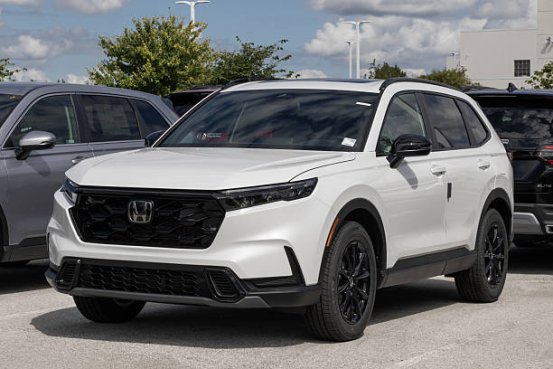The 2025 Honda CR-V continues to lead the compact SUV segment, blending practicality, comfort, and modern technology seamlessly. From the well-appointed EX to the top-tier Sport Touring Hybrid, it remains a popular choice for drivers valuing reliability, efficiency, and contemporary design—core aspects of Honda’s enduring reputation.

Overview and Design
Now in its sixth generation since 2023, the 2025 CR-V preserves its recognizable silhouette while introducing thoughtful upgrades inside and out. The front end showcases a bold grille, clean body lines, and sharp LED accents, projecting confidence and refinement. Inside, improved materials and enhanced digital integration elevate the cabin experience. Early owner feedback highlights its family-friendly qualities, including generous space, a smooth ride, and intuitive infotainment. While the vehicle’s balanced nature is widely praised, some drivers note the handling leans more toward comfort than sporty performance.
Performance and Powertrain Options
The 2025 CR-V offers two main powertrain choices. The standard 1.5-liter turbocharged four-cylinder produces roughly 190 horsepower and 179 lb-ft of torque, paired with a continuously variable transmission (CVT). The hybrid model combines a 2.0-liter engine with dual electric motors to deliver around 204 horsepower. Buyers can select front-wheel or all-wheel drive on most trims. Reviews suggest the CR-V prioritizes refinement and ease of use over aggressive acceleration, while the hybrid is praised for its smooth transitions and responsive performance. Suspension tuning balances comfort and control even over uneven surfaces. Standard towing capacity reaches 1,500 pounds, with the hybrid accommodating up to 1,000 pounds—adequate for light hauling needs.
Interior, Space, and Comfort
The CR-V’s cabin continues to impress with its ergonomic and spacious layout. Rear passengers enjoy about 39.3 inches of legroom, ensuring comfort on longer journeys. Cargo capacity remains class-leading, with 39.3 cubic feet behind the rear seats and up to 76.5 cubic feet when folded. A minimalist dashboard features a horizontal design, digital instrumentation with a 7-inch display (or 9 inches on higher trims), and a central infotainment screen. Upgraded materials, soft-touch panels, and refined finishes enhance the overall interior ambiance. Seats provide excellent support and adjustability, while improved insulation reduces road and wind noise, particularly on highways.
Fuel Efficiency and Economy
Efficiency remains a key strength of the CR-V. The turbocharged engine achieves about 28 mpg city, 34 mpg highway, and 30 mpg combined in FWD, with slightly lower numbers for AWD. Hybrid models deliver impressive figures, approximately 43 mpg city, 36 mpg highway, and 40 mpg combined (FWD), with AWD versions reaching around 40/34/37 mpg. Real-world driving generally mirrors EPA estimates, especially in urban conditions where the hybrid’s brief EV-mode operation enhances fuel savings and lowers emissions.
Market Position and Value Retention
Competing in the crowded compact SUV market against rivals like the Toyota RAV4, Mazda CX-5, Hyundai Tucson, and Ford Escape, the CR-V holds its own. Each competitor offers unique advantages: the RAV4 emphasizes hybrid options and resale strength, the CX-5 delivers engaging driving and premium interiors, the Tucson excels in technology and warranty coverage, and the Escape appeals with varied powertrains and digital features.
SUV Model | Starting MSRP (est.) | Key Strengths | Fuel Economy (combined) |
2025 Honda CR-V | $28,500 – $39,000 | Reliability, interior space, efficiency | 30–40 mpg |
2025 Toyota RAV4 | $28,000 – $42,000 | Powertrain variety, resale value | 30–41 mpg |
2025 Mazda CX-5 | $27,500 – $40,000 | Driving dynamics, upscale interior | 26–28 mpg |
2025 Hyundai Tucson | $27,000 – $38,500 | Warranty, tech features | 29–38 mpg |
2025 Ford Escape | $28,000 – $39,500 | Technology, engine variety | 28–37 mpg |
Estimates may vary; buyers should confirm specifications before purchase.
Honda’s reputation for dependability continues to support the CR-V’s strong resale values. Historically, it depreciates slower than many rivals, with projected three-year residuals above 60%. For those seeking a reliable, fuel-efficient, and comfortable SUV with enduring value, the 2025 CR-V remains one of the most well-rounded options in its class.
